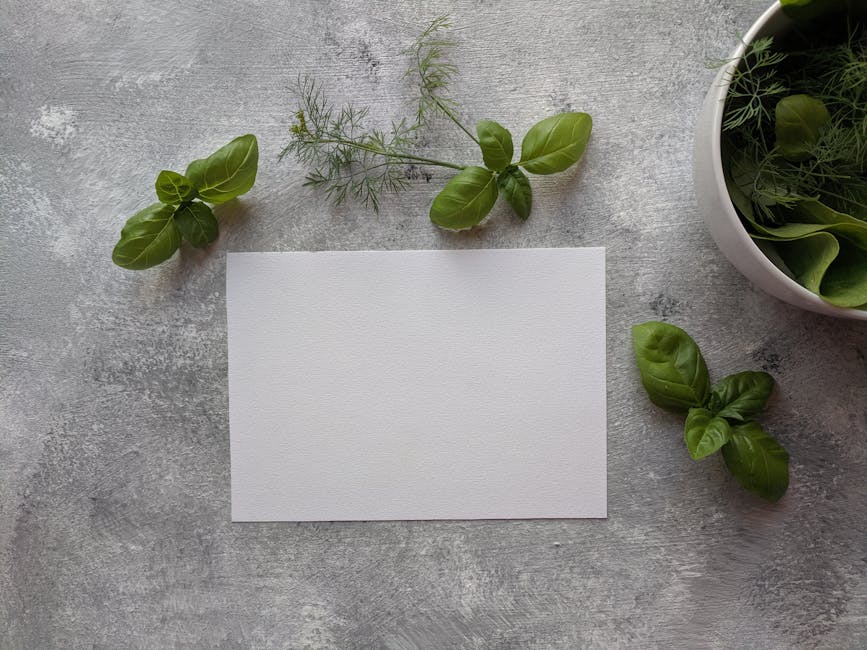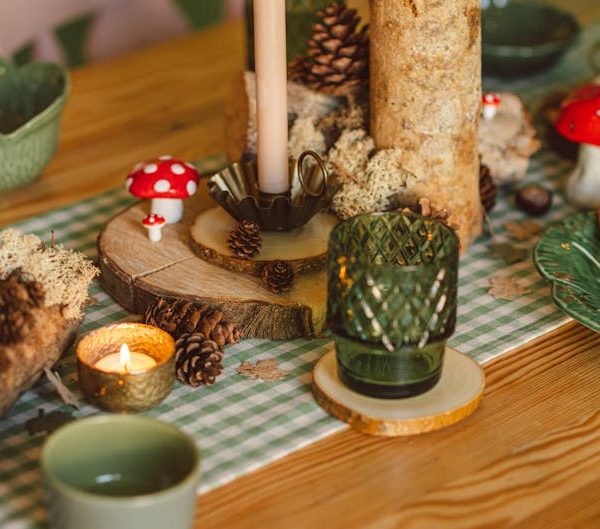Using a Glass of Water for Basil Storage
Storing basil in a glass of water might as well be the most foolproof method on our list. This strategy mimics the plant’s natural living conditions, keeping it alive and fresh. Start by trimming the stems at an angle, which will create a larger area for water absorption. Then, place your vibrant stems in a glass jar or cup filled with water. Remember to discard any leaves that fall beneath the water level to prevent rotting.
Pro Tip: To keep your basil fresh and vigorous, it’s a good idea to change the water every two days. This cuts down on bacteria growth, which can cause the stems to become slimy and the leaves to turn yellow.
Pros and Cons: While this method is straightforward and easy to set up, it calls for consistent maintenance. Changing the water and monitoring the basil may be a slight hassle. However, the upside is that you will have fresh basil on hand, not to mention the added aesthetic appeal of a mini countertop garden to your kitchen.
Storing Basil in the Refrigerator with Plastic Bag
If you find the constant maintenance of the previous method somewhat laborious, this method might be your go-to alternative. To start, gently wash the basil and pat it dry with a clean towel or paper towel. Then, instead of bundling the leaves, loosely place them in a plastic bag. Be sure to keep the bag slightly open for ventilation.
Checklist:
- Wash the basil leaves
- Pat them dry
- Place them in a plastic bag
- Don’t seal it – let the bag slightly open
Best Practice: If you want to retain your basil’s optimum freshness using this method, remember not to stuff too many leaves into one bag. Overcrowding can cause condensation, leading to a faster decay rate.
Freezing Basil Leaves in Cubes
The concept of freezing produces in individual servings isn’t foreign to most of us. With basil, this not only extends its shelf-life but also locks in that fresh, fragrant flavor we love. Begin by placing an individual basil leaf in each section of the ice cube tray, then fill it with either olive oil or water.
Comparison: The primary difference between using fresh basil and basil frozen in oil or water is in the texture, especially when thawed. The frozen basil will have a slightly limper texture but retains most of the flavor compared to the fresh basil.
Best Practice: If you can’t decide between oil or water, consider the types of dishes you frequently prepare. Using oil might be a great choice for sautéing, roasting, or grilling, while water might work better for soups and stews.
Drying Basil for Long-Term Storage
Drying basil is perfect for long-term storage, especially for those who can’t use up their basil stash quickly. After washing and thoroughly drying the basil leaves, bundle them together with a string or rubber band. Hang these bundles upside down in a warm, dry, and airy place. An important aspect of this method is ensuring the full drying of the leaves.
Pros and Cons: Drying basil allows for long-term storage and is excellent for preserving large quantities of the herb. However, it’s worth noting that this method may result in a mild loss of flavor compared to its fresh counterpart.
Pro Tip: Regularly check your dried basil to ensure it hasn’t developed mold or discolored. If you notice any adverse changes, it’s best to dispose of the affected leaves to prevent it from spreading to the rest of the batch.
Creating Basil Pesto for Storage
Storing basil as pesto is one method you don’t want to overlook, especially if you love the sauce. To create the pesto, blend fresh basil leaves with ingredients like pine nuts, garlic, parmesan, and olive oil. Once ready, you can either store it in the fridge for up to a week or freeze it for several months.
Best Practice: For a more convenient use, store your basil pesto in smaller, meal-sized containers. This way, you can just grab a container whenever you need it for your recipes, without having to thaw the whole batch.
Checklist:
- Blend the fresh basil leaves and other ingredients to make pesto
- Store it in the fridge if you’re using it within a week, or freeze for longer storage
- Use smaller containers for easier usage
Remember to choose the storage method that best fits your needs and preferences. Enjoy your fresh, flavorful basil anytime!
Key Takeaway:
- Basel can be preserved using a variety of methods, each having its own benefits and drawbacks.
- Storing basil in a glass of water is a simple method that mimics natural conditions but requires frequent water changes.
- Keeping basil in the refrigerator in a slightly open plastic bag offers an effective low-maintenance option.
- Freezing basil leaves in cubes allows for long-term storage and flavor retention, particularly when using oil.
- Drying basil is another long-term solution, although it can result in a mild loss of flavor.
- Storing basil as pesto offers a tasty and easy-to-use option, especially when stored in meal-sized containers.
The secret to giving your culinary creations a fresh dash of basil anytime lies in the methods you choose to store the herb. Hence, the various recommended innovative methods to store basil for longer and retain its freshness. Remember to adapt the method to your specific needs and don’t forget to enjoy the aroma and taste of fresh basil in your dishes!
FAQs
Q: What is the best way to store freshly picked basil?
A: There are various methods to store freshly picked basil. One of the simplest and most effective is placing it in a glass of water just like cut flowers. Please trim the stems and remember to change the water regularly.
Q: Can I just put basil in the fridge?
A: Yes, you can. Make sure to gently wash and pat dry the basil leaves before placing them in a slightly open plastic bag for ventilation.
Q: How effective is freezing basil?
A: Freezing basil, especially in cubes of oil or water, effectively locks in its flavor and extends its shelf life. This method is particularly handy for people who use basil moderately but frequently in their cooking.
Q: Does drying basil result in losing its flavor?
A: While drying basil allows for long-term preservation, especially for large quantities, there may be a mild loss of flavor compared to fresh basil.
Q: Can I store basil as a sauce?
A: Absolutely! Creating basil pesto for storage is an excellent option. Not only do you store your basil, but you’ll also have a ready-to-use sauce at your disposal.
Feel free to share this article with any fellow cooking enthusiasts and keep returning for more tips and tricks for your kitchen-related queries.






